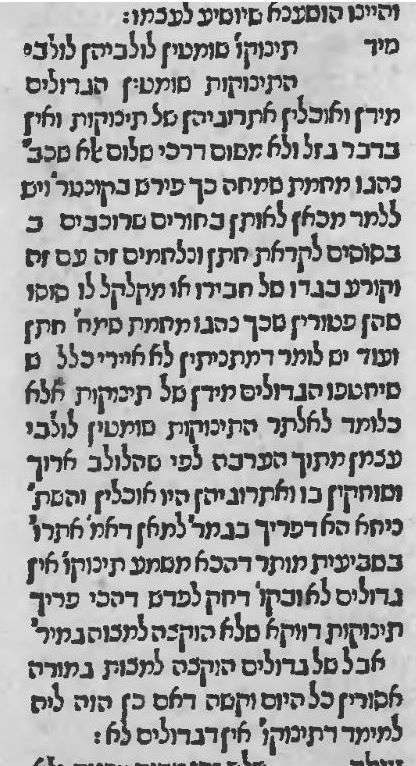
Since Yitzhak is a high falutin' scholar he didn't explain or translate, so I'll take the opportunity to do so.
The background is that the Mishnah writes that in the Temple, on the last day of Sukkot, the people would take the lulavs from the children and eat their Etrogs. Naturally there are two ways to understand this: one is that the people would eat the etrogs, the other is that the children did. But Rashi interprets it that it was the adults who would eat them. Therefore the Mishnah is describing a situation where the adults apparently grabbed the lulavim and esrogim from the hands of the children, and Rashi explains that this was not stealing - it was a fun game.
From this explanation Tosafos derives a principle: One can learn from here that those bochurim (youths) who ride horses and war with one another, before grooms, and tear each others clothing or hurt the horse, are exempt from the damage they've caused because this is the customary way of providing joyous entertainment for grooms.
Tosafos then goes on to give an alternate explanation, that it was the children themselves who removed the lulavim (from the attached willows) and ate the esrogim.
So there you have it: in the times of Tosafos the bochurim would get on horses and joust with each other for entertainment.
Interestingly, folio 16v of the Kaufmann Mishneh Torah manuscript A77, which was produced in Northeastern France, 1296, features a pair of knights jousting (although this illustration looks a little more serious than the wedding sport). Why jousting knights are illustrating this first page of the Rambam's Hilchos Yesodei Ha-Torah is unclear to me[1], but here you go.

Next time you see the shuffle at weddings, think of how far we've fallen - or how far we've come. Read the rest of Yitzhak's post for additional sources.
[1] מלחמתה של תורה?
